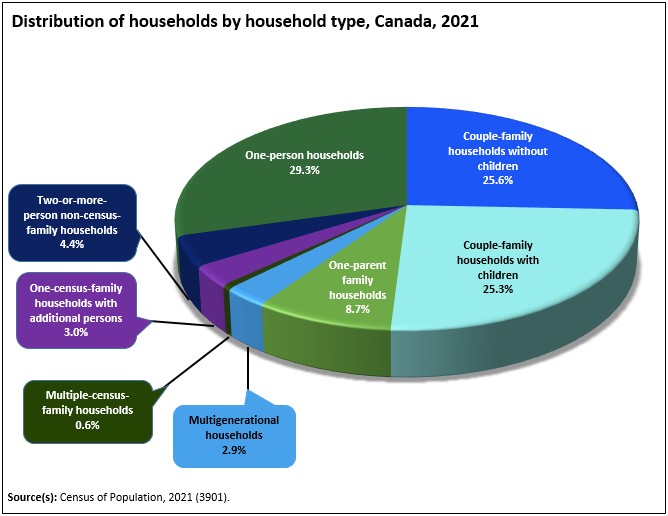More Canadians live alone, but roommates fastest growing household type
At a glance (3 minute read)
- The number of Canadians living alone has increased significantly, with 4.4 million residents living alone in 2021, making up 15% of adults in private households.
- Roommate households have seen rapid growth, becoming the fastest-growing type of household, increasing by 54% from 2001 to 2021. However, they still represent only 4% of Canadian households.
- The proportion of young adults aged 20 to 34 living with roommates or without parents has increased to 61% in 2021, driven by financial considerations and a lack of affordable housing options. This trend suggests potential for co-ownership housing as an alternative.

Canada-wide, in 2021 (most recent data) 4.4 million residents lived alone, an increase of 1.7 million residents since 1981, according to Statistics Canada.
These 4.4 million residents represent 15 per cent of all adults aged 15 and older in private households, the highest share on record.
There has been a pronounced shift to smaller households over the past century. The share of households comprising just one person has continued to grow over the decades since 1941, when just six per cent of households were residents living alone.
In 2016, one-person households became the predominant household type (28 per cent) for the first time in Canada's 156-year history.
One-person households continued to hold the top spot among households in 2021, representing just under 3 in 10 households (29.3 per cent).

Roommates are the fastest-growing type of household
The majority of Canada's households (60 per cent) contain one census family, defined as a couple, with or without children, or a one-parent family—and no additional people.
During the last 20 years, however, the share of households with other types of living arrangements has steadily increased.
Roommate households composed of two or more people not in a census family, were the fastest growing household type from 2001 to 2021, increasing at a rate of 54 per cent.
From 2016 to 2021, the number of roommate households increased by 14 per cent, more than triple the growth of households with one census family.
However, the 663,835 roommate households in Canada represent just four per cent of all Canadian households.
More young adults live with roommates
In 2001, almost half (49 per cent) of young adults aged 20 to 34 lived with their spouse, partner, or child, without their own parents present. By 2021, this share decreased to 39 per cent.
In contrast, the proportion of young adults sharing their home with at least one parent, living with roommates, or living alone grew to 61 per cent in 2021 from 51 per cent in 2001.
The fastest-growing living arrangement for adults aged 20 to 34 was living with others outside a census family, increasing by 20 per cent from 2016 to 2021.
This includes sharing a home with roommates or living with an unrelated family or with extended family. This was the living situation of 15 per cent of young adults in 2021, up from 11 per cent in 2001.
Young adults typically live with roommates for financial support and because of a lack of affordable alternative housing options.